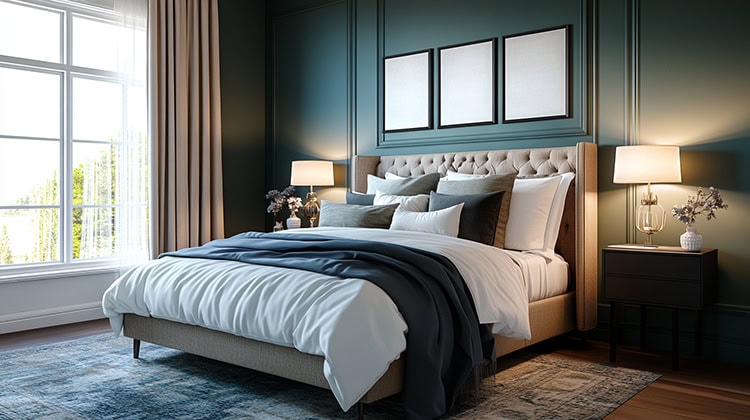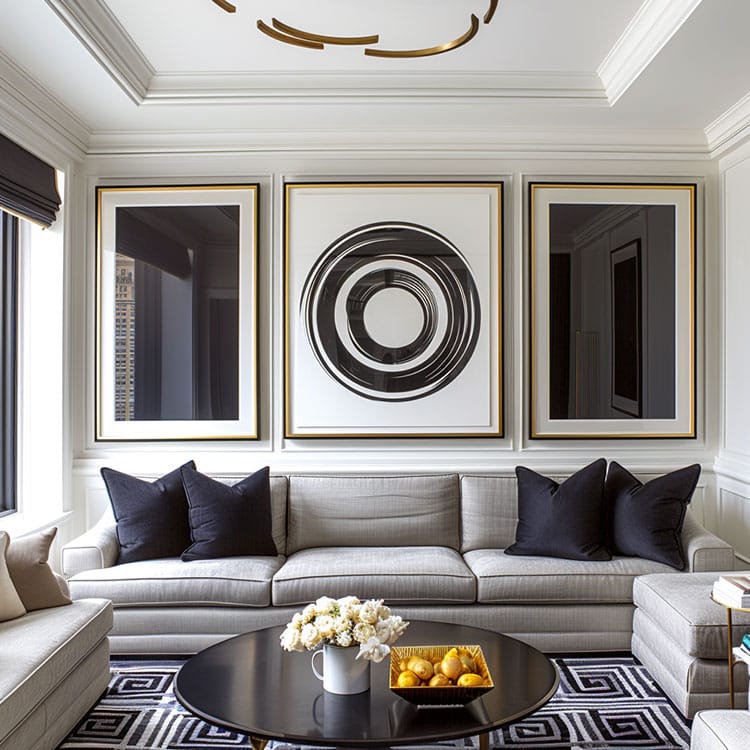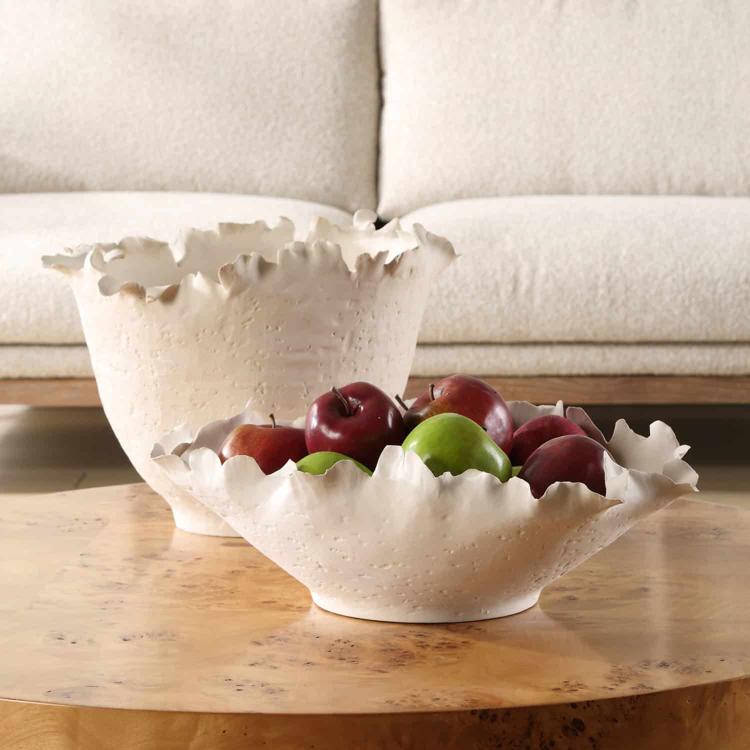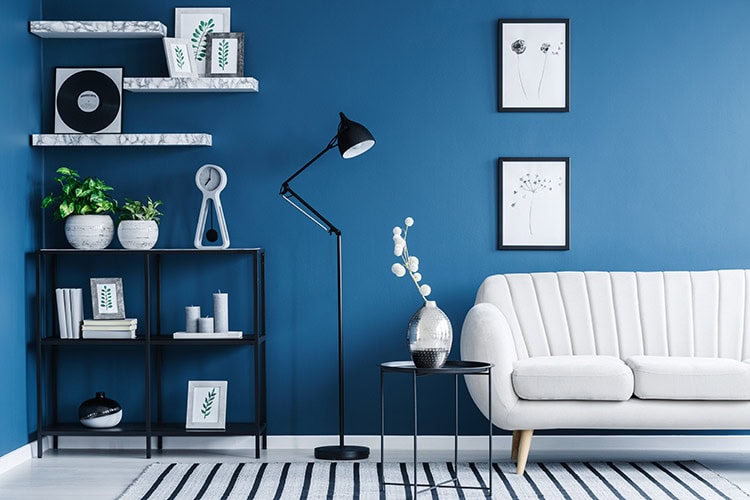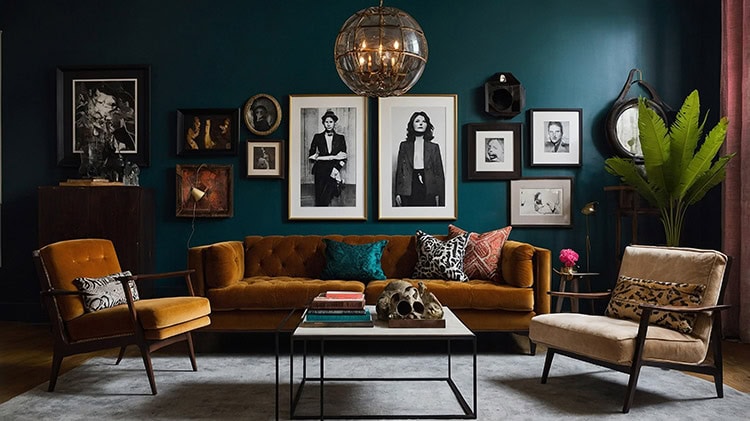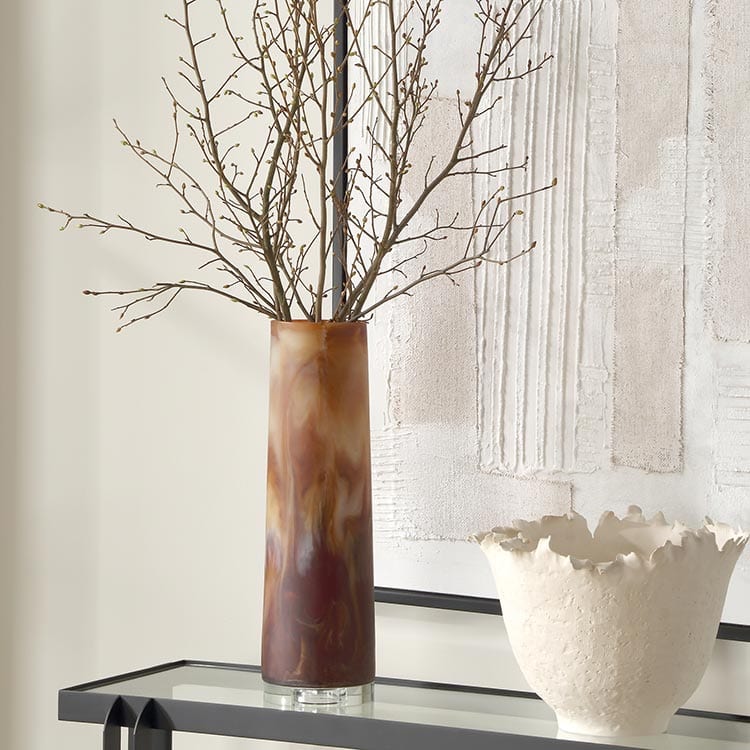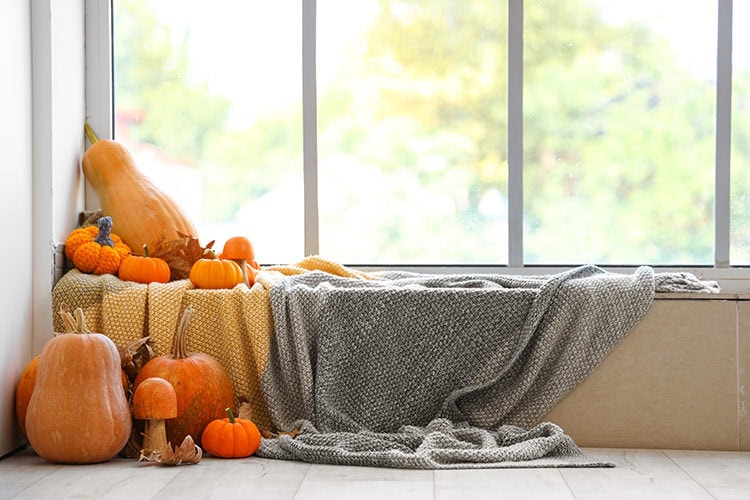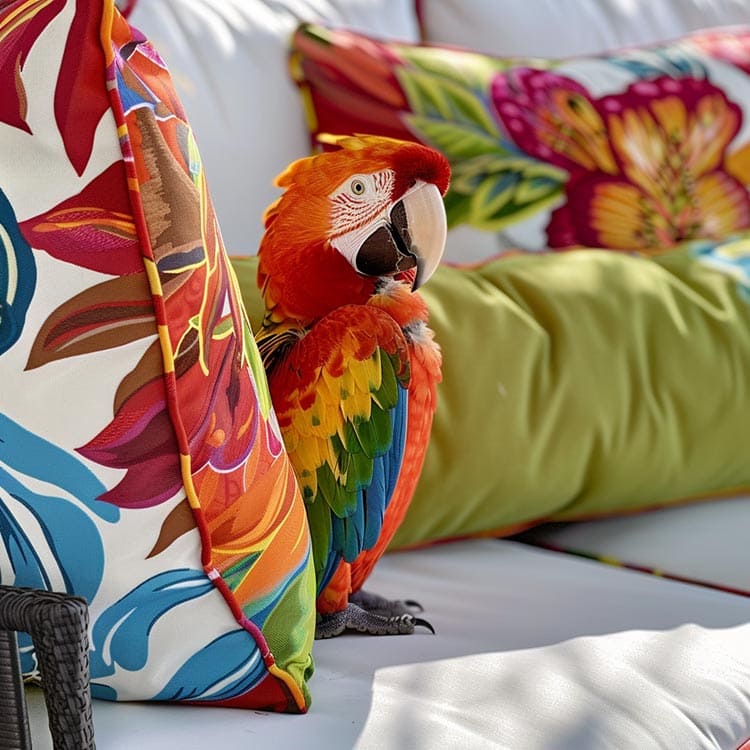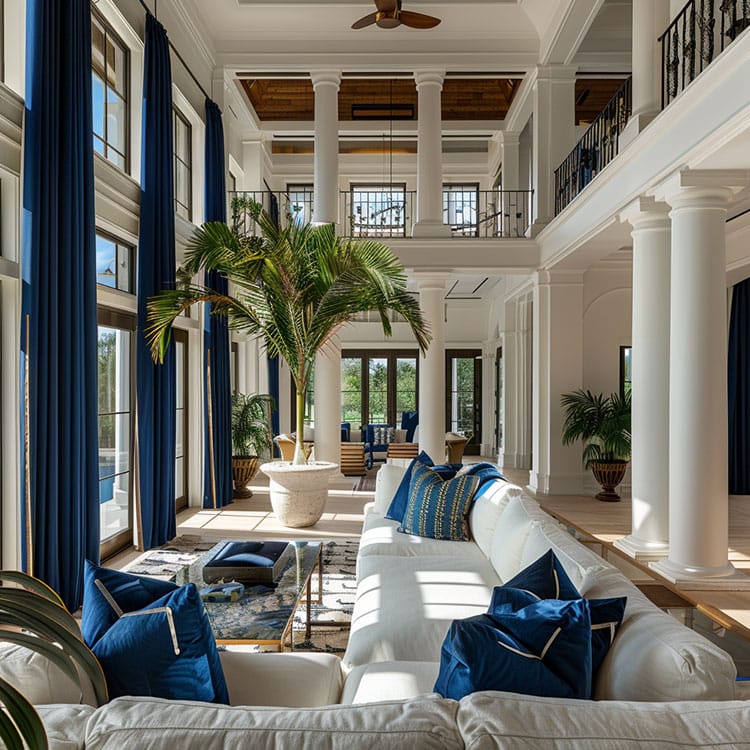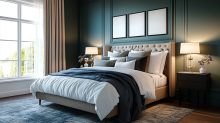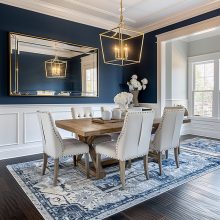Throughout the years, the rules of decoration have been strictly adhered to. But, just most everything, things change–including what you should or should not do when you decorate your home. You might be surprised to learn that many things that seemed inappropriate years ago are now considered not only appropriate but stylish and trendy as well.
Today, I challenge you to toss those decorating rules out the window! It’s time to rethink what we know about decorating and shed light on the myths many of us have fallen victim to.
Myth #1: All ceilings need to be white.
White gives you a clean, simple look, but it is not the only option. Go dark, go bright, go bold, go textural, go patterned, go paper–if something other than white works for your ceiling, then go for it.
Myth #2: Small rooms should never be painted dark colors.
At the end of the day, you have to be happy with your space–no matter what the size. For years, we’ve always heard that dark colors make small spaces look even smaller. This really isn’t truthful. If a room gets enough natural light, dark colors can look amazing. Even if the space doesn’t have a lot of windows, darker colors can often come across as cozy, even dramatic, giving the room a much bigger presence than if it had been painted light.
Myth #3: You have to stick with one decorating style.
Wrong. It’s not true that your room has to have a single decorating style to look coherent. Times have changed and our tastes in style have evolved. As long as there’s a common denominator, an eclectic interior can have a uniform look.
Myth #4: Wood finishes have to be the same.
Interiors can sometimes appear flat and boring when everything matches. For depth and interest go ahead and mix your wood finishes. As long as their tones complement each other, it’ll look amazing!
Myth #5: Neutral colors are safe.
Neutrals get a bad rap for being boring. In all reality, they are anything but. However, they have to be approached in the right way. If you don’t address tone, shape, texture, and depth, you’ll be left with a room dangerously verging on boring.
Myth #6: No more than 3 patterns per room.
A popular rule is the rule of 3: one small, one medium, and one large pattern per room. In most cases, it’s an excellent rule to follow. There are, however, some exceptions. If you’re the adventurous type, use as many patterns as you’d like. Just be sure to scatter them evenly throughout the room and break them up with solids so the eye has a place to rest
Myth #7: A 3-piece living room suite is a must.
A sofa and a pair of armchairs are common choices for living spaces, but what if your space calls for a different solution? There are much more interesting choices than the standard living room seating. Maybe you need two sofas. Maybe you want a neutral sofa and colorful chairs. Maybe it’s a sectional you need. Perhaps you don’t want or need a sofa at all. Mix and match it any way you choose.
Myth #8: Metals can’t be mixed.
If anything, mixing metals should be a goal every homeowner should strive for. Mixing metal finishes in the same room is actually a very sophisticated look! With that said, it’s important to avoid going overboard to the point of looking messy. To keep that from happening, limit it to 3 finishes per room and try to keep them in the same tone. For example, colors can be different but group together finishes–brushed finishes together, polished finishes together, etc.
Myth #9: There can only be one decorating style.
As you decorate, it’s important to remember that your home should reflect your style and personality–so don’t get caught up in trying to define your home by a single style. Instead of limiting yourself, aim for eclectic surroundings that will speak to everyone who lives in the home. To learn more about eclectic style, read our blog 5 Tips for Mastering the Art of Eclectic Design Style.
Myth #10: Fabrics have to match.
If there’s only one rule you break, let it be this one. Long gone are the days where room after room is full of matching fabrics that cover just about everything in sight, including window treatments, pillows, and upholstery. Today, it’s all about mixing patterns to create unique spaces that reflect those who inhabit them. With that said, there it’s important that your fabrics do compliment each other, which is completely different than matching with each other. As long as there is a commonality among color, there are abundant opportunities for mixing patterns.
Ready to be a rulebreaker? Stop by one of our showrooms so we can help you achieve the vision you have for your home.


